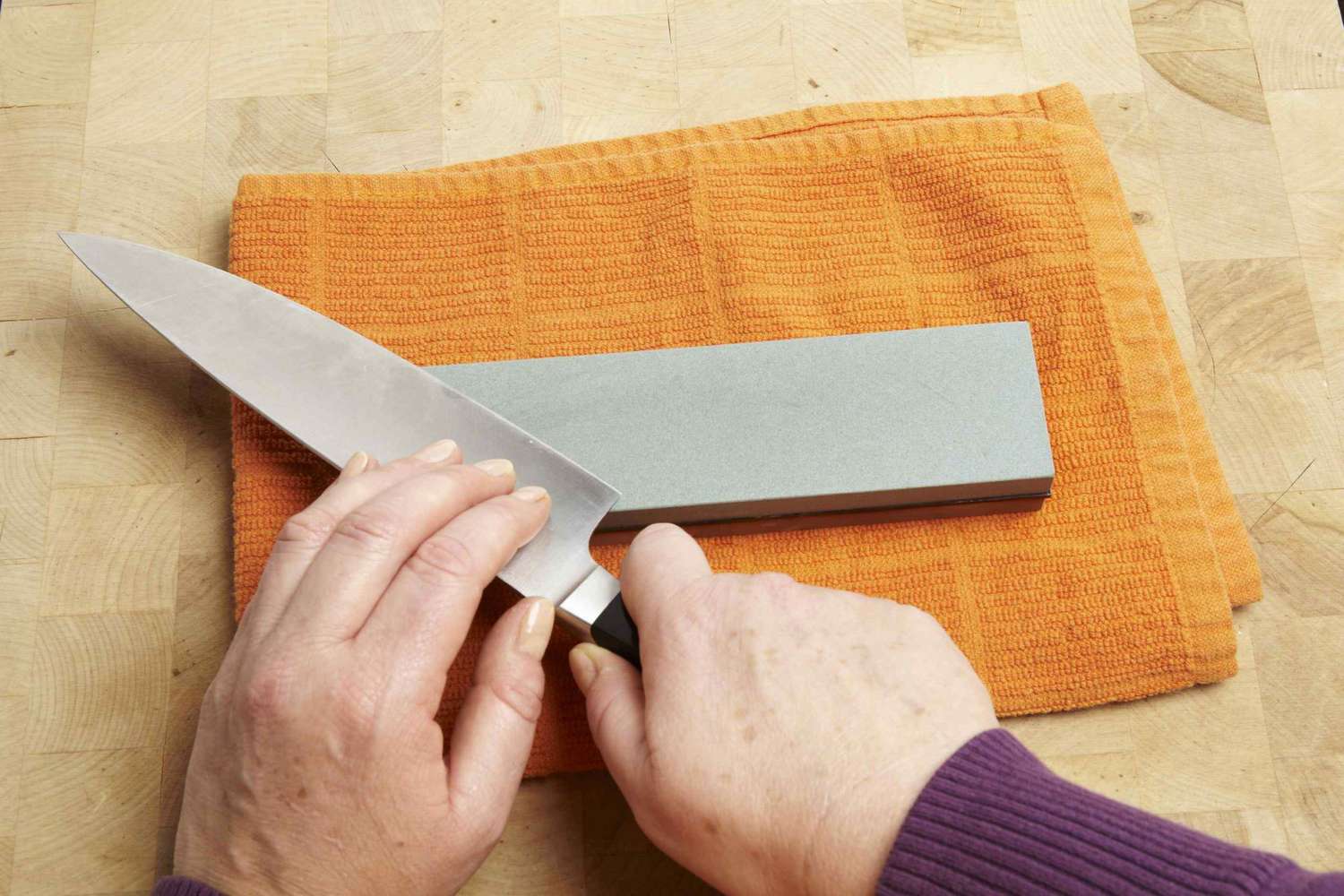How Does a Knife Sharpening Steel Work?
Knives are a necessary tool in the kitchen and are frequently overlooked. But with good care, a dull knife can be restored to its former glory. 🙂 There are a few things you can do to keep your knife sharp: sharpen it regularly, store it properly, use a sharpener that is appropriate for the type of knife you have, and avoid using force when sharpening. When it comes to knife sharpening, there are several factors to consider before buying the tool. In this article, we’ll talk about honing, diamond dust, ceramic rods, and adhesive wear. These factors all have different benefits and drawbacks. Here are some of the basics.

Honing Steel
A honing steel, or sharpening rod, is a tool for smoothing the knife’s edge. It is positioned at a 15-degree angle to the blade. You can use a knife sharpening steel in a number of positions, but the method described here will help you maintain the proper angle. If you have a serrated knife, the angle between the blade and the steel should be about 15 degrees.
The length of your knife should be at least two inches longer than its length. 🙂 Serrated or bread knives are not appropriate for honed knives. This extra length will allow you to smoothly run the entire blade edge down the shaft in a single swipe. Once you’ve finished sharpening, be sure to rinse the steel well and wipe the blade dry to remove any metal filings. It’s important to clean and dry the blade after using sharpening steel, otherwise, metal filings will get into your food.
How Do You Use Honing Steel?
The first step to sharpening a knife is to hold the steel with your non-dominant hand, with the tip resting on a dry cutting board. Hold your knife against the steel so that most of its blade is in front of the steel, and gently push it down and across. You should feel the knife blade make slight noises as you sharpen. Repeat this process on both sides of the knife.
Similarly, honing steel is commonly believed to be effective only with simple, 🙂 soft steel blades. However, this misconception is outdated. High-hard vanadium steel blades can be sharpened using this tool without losing any of their durability. A high-quality steel blade can be sharpened by honed steel on the honing rod. The blade is then realigned to maintain its sharpness.
How to Use Ceramic Rods to Sharpen Knives
First, you should clean the ceramic honing rod properly. After using it for the first time, you may notice gray stripes on the surface of the sharpened knife. These stripes are the metal residue that remains after sharpening. The porous surface of ceramic rods can become clogged with metal filings over time. Rinsing and soaping it will not get rid of this. To remove these filings, rub the rod lightly with a rubber eraser.
Second, choose an impact-resistant ceramic rod. These rods are better at sharpening knives with harder steel than normal rods. Although they cost a little more than other rods, impact-resistant ceramic sticks will last much longer. They also have a rubber tip that keeps them from slipping. A ceramic rod can be used to sharpen recurve knives, too. Lastly, choose a ceramic sharpening rod that will sharpen your knives without scratching them.
A special knife-care kit is essential for sharpening knives. A sharpening rod should be used to sharpen a wide variety of knives, from traditional kitchen knives to more exotic models. Knife sharpening kits have all the necessary tools to sharpen any blade. Purchasing a sharpening rod from Grommet’s Knife & Carry store will save you time and money and make your knife sharper faster. For more information about using a knife sharpening kit, check out the link below.
A sharpening rod can be used for a daily workhorse or fine-tuning. Unlike a sharpening stone, ceramic rods don’t abrade the knife to the same extent. Similar to a sharpening stone, you must start at the tip or heal and hold a consistent pressure and angle throughout. If you use a sharpening rod all the time, you risk prematurely abrading the blade.
Adhesive Wear
If you’ve ever purchased a new pair of knives, you may be wondering how adhesive wear affects the sharpening steel. Adhesive wear is a type of wear that occurs when two surfaces are in contact and one or both are moving. The contact between the two surfaces creates friction, and the heat generated by the friction can cause the adhesive material between the surfaces to melt. When the surfaces move apart, the molten adhesive can be pulled away from the surface, leaving a thin film of adhesive behind. This film of adhesive can then cause further wear as it rubs against the surface. Adhesive wear is most commonly seen in machines that use metal-on-metal contacts, such as bearings and gears, but it can also occur in knives when they are sharpened.
The cutting edge of a knife experiences the most wear. This happens because of its fast cutting speed. Additionally, the point has the longest distance from the rotary shaft, which reduces its cutting performance.
There are two types of wear that reduce the life of sharpening steel tools: abrasive wear and adhesive damage. Abrasive wear occurs when a hard surface meets a softer surface, while adhesive wear occurs when materials are transferred from one surface to another.